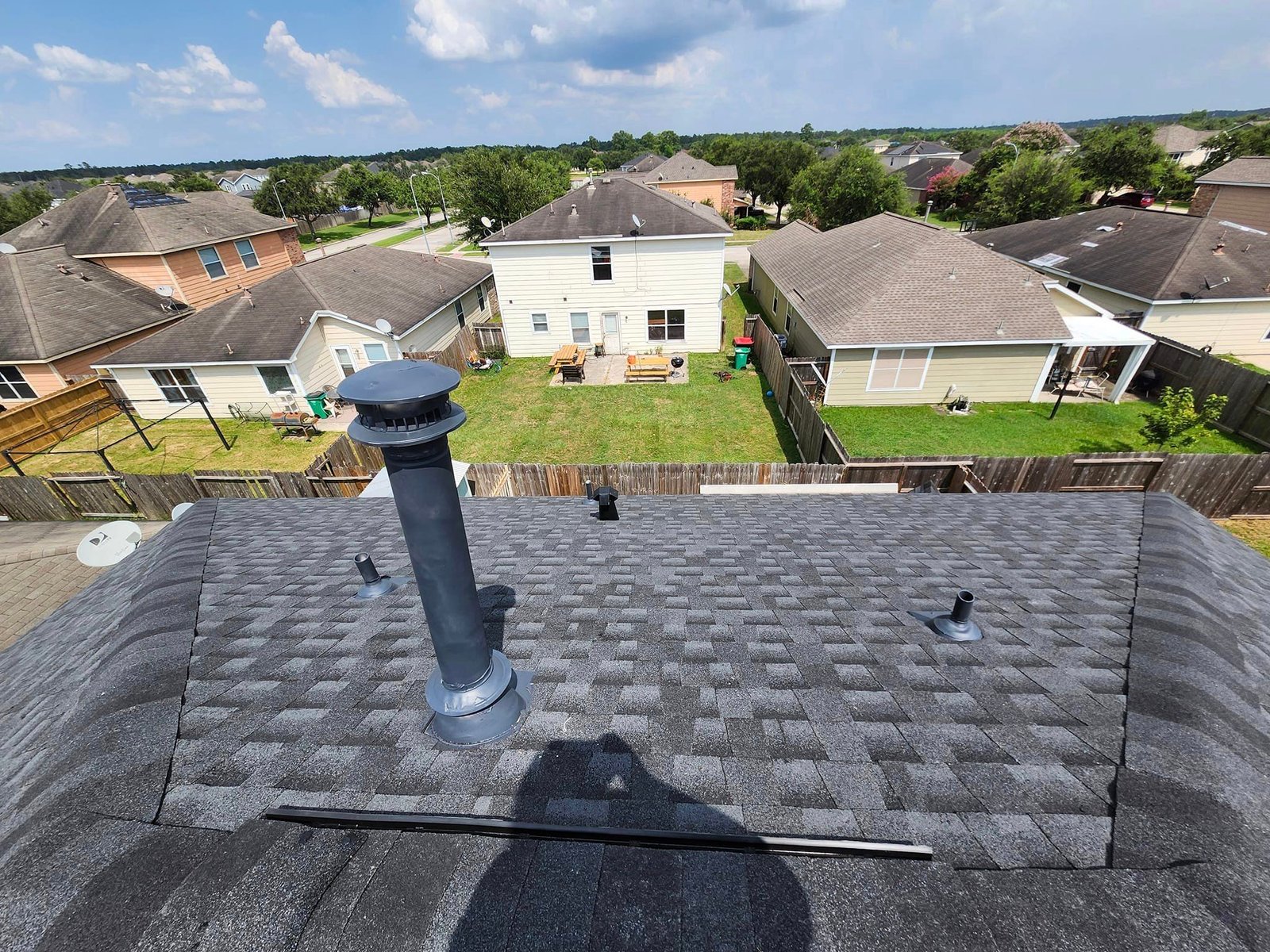When it comes to flat roofing systems, two of the most popular materials on the market are EPDM (ethylene propylene diene monomer) and TPO (thermoplastic polyolefin). Both options are widely used in commercial and residential applications due to their durability, cost-effectiveness, and energy efficiency. However, understanding their differences is crucial to making an informed decision for your specific roofing needs.
What is EPDM Roofing?
EPDM is a type of synthetic rubber roofing membrane that has been used in the roofing industry since the 1960s. Its long track record of reliability and affordability has made it a go-to choice for flat and low-slope roofs.
Key Features of Rubber Membranes
Material Composition: Made of synthetic rubber, these membranes are flexible, lightweight, and resilient.
Color Options: Typically available in black or white, with black being the more common choice.
Application Methods: Can be fully adhered, mechanically fastened, or ballasted, offering versatility for various installations.
Thickness Options: Comes in options such as 45 mil, 60 mil, and 90 mil, allowing customization based on project needs.
Benefits of Rubber Roofing
Durability: Rubber membranes often last 25-30 years or more when properly maintained.
Flexibility: They perform well in extreme temperatures and can adapt to building movement, making them suitable for diverse climates.
Cost-Effective: Rubber roofing is generally more affordable compared to other flat roof materials.
Ease of Installation: Lightweight and straightforward to install, which can reduce labor costs.
Eco-Friendly: Most rubber membranes are recyclable, making them an environmentally friendly choice.

Drawbacks of Rubber Roofing
Vulnerability to Punctures: More prone to punctures and tears compared to some other roofing systems.
Limited Reflectivity: Black membranes absorb heat, which may increase cooling costs unless coated with a reflective material.
Seam Weakness: Seams, while improved by modern adhesive technologies, can still pose a potential weakness if not installed properly.
By considering these features, benefits, and potential drawbacks, you can determine if a rubber roofing system aligns with your specific project needs.
What is TPO Roofing?
TPO is a single-ply roofing membrane made of a blend of polypropylene and ethylene-propylene rubber. It has gained popularity over the past few decades as an energy-efficient and versatile alternative to other flat roofing options.
Key Features of Thermoplastic Roofing
Thermoplastic roofing membranes are a versatile option for flat and low-slope roofs, blending the benefits of rubber and plastic. They are popular for their energy efficiency and durability.
Features of Thermoplastic Membranes
Material Composition: Engineered to combine flexibility and toughness, providing long-lasting performance.
Color Options: Typically available in reflective white, with additional options like gray and tan to match design preferences.
Application Methods: Can be installed using mechanical fasteners, adhesives, or ballasting techniques.
Thickness Options: Offered in various thicknesses, such as 45 mil, 60 mil, and 80 mil, catering to different project needs.
Benefits of Thermoplastic Roofing
Energy Efficiency: Reflective white membranes help reduce heat absorption, cutting down cooling costs in warmer climates.
Durability: Resistant to punctures, tears, and physical impacts, making them suitable for high-traffic or harsh environments.
Seam Strength: Heat-welded seams form a watertight bond, offering superior performance compared to adhesive seams.
Chemical Resistance: Designed to withstand exposure to mold, dirt, and various chemicals, ensuring longevity.
Versatility: Applicable to a wide range of building types and climate conditions.

Drawbacks of Thermoplastic Roofing
Newer Technology: These systems are relatively new compared to older materials, so there’s less long-term performance data available.
Quality Variability: Differences in manufacturing processes among brands can result in inconsistencies in performance and durability.
Higher Costs: Thermoplastic membranes generally have a higher initial cost, though they may offset this with energy savings and durability.
Understanding these features and trade-offs can help determine if thermoplastic roofing is the right choice for your project.
Comparing Rubber and Polyolefin Roofing Systems
When selecting a flat roofing material, it’s essential to compare two popular options: rubber membranes and polyolefin-based systems. Both have unique strengths and drawbacks, so understanding their differences can help you make an informed decision.
1. Cost
- Rubber Membranes: These are generally less expensive, with material and installation costs ranging from $4.00 to $8.00 per square foot.
- Polyolefin Systems: Slightly more costly, with prices between $5.00 and $10.00 per square foot.
2. Energy Efficiency
- Rubber Membranes: Black rubber absorbs heat, making it beneficial in colder climates but potentially increasing cooling costs in warmer regions. White-coated variants improve reflectivity but can add to the cost.
- Polyolefin Systems: These are known for their excellent solar reflectivity, making them an energy-efficient choice in hot climates.
3. Durability and Lifespan
- Rubber Membranes: Proven to last 25–30 years with proper maintenance.
- Polyolefin Systems: Comparable lifespan of 20–30 years, though the long-term durability of newer variations is still under study.
4. Ease of Installation
- Rubber Membranes: Lightweight and straightforward to install, which can reduce labor time and costs.
- Polyolefin Systems: Slightly more complex to install due to heat-welded seams, but this process creates strong and durable bonds.
5. Weather Resistance
- Rubber Membranes: Offer excellent resistance to extreme weather conditions, UV exposure, and hail damage.
- Polyolefin Systems: Similarly resistant, with an added advantage of stronger, heat-sealed seams that enhance weather protection.
6. Environmental Impact
- Rubber Membranes: Recyclable and eco-friendly, particularly when using white membranes to enhance energy efficiency.
- Polyolefin Systems: Also recyclable and free from harmful chemicals, making them a sustainable choice.
7. Maintenance Needs
- Rubber Membranes: Require regular inspections to address potential punctures and seam vulnerabilities.
- Polyolefin Systems: Less prone to punctures and damage, but the heat-welded seams need to be inspected periodically to ensure longevity.
By evaluating these factors, property owners can choose the roofing system that best fits their climate, budget, and energy efficiency goals.

Suitability for Different Projects
Commercial Buildings
TPO is often preferred for commercial applications due to its energy efficiency, strong seams, and modern aesthetic.
Residential Projects
EPDM is a great choice for smaller residential roofs, especially in colder climates where heat absorption is a benefit.
Budget-Conscious Projects
If cost is a major concern, EPDM is usually the more affordable option without sacrificing durability.
Sustainability-Focused Projects
Both EPDM and TPO are recyclable, but TPO’s energy-saving properties make it slightly more appealing for eco-friendly builds.
Which is Right for You?
Deciding between synthetic rubber and thermoplastic membranes depends on your unique needs, priorities, and budget. Here’s what to consider:
- Climate: For hot climates, reflective membranes can reduce cooling costs significantly. In colder regions, darker membranes that absorb heat may be more beneficial.
- Budget: Synthetic rubber is often a more economical choice for initial installation.
- Durability: Both options offer similar lifespans, though heat-welded seams in thermoplastic materials may provide added strength and reliability.
- Aesthetic Appeal: Bright, reflective finishes can offer a clean, modern look, which might be preferable for certain projects.
Carefully evaluating these factors with the help of a professional contractor will ensure the best choice for your roofing needs.
Final Thoughts
Both rubber and thermoplastic membranes are popular choices for flat roofing systems, each offering distinct advantages. Rubber membranes provide a proven, budget-friendly solution with excellent durability and flexibility, making them ideal for various climates. Thermoplastic membranes, on the other hand, are modern and energy-efficient, featuring superior seam strength and reflectivity for reduced energy costs in warmer regions.
When deciding which material is best for your roof, it’s important to consult with a professional roofing contractor. They can evaluate your property’s specific needs, climate considerations, and budget to recommend the most suitable option. With expert guidance, you’ll ensure a durable, efficient, and long-lasting roofing system.



